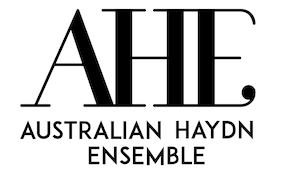Stunning videos of the most epic, thrilling trills in piano music from Beethoven to Debussy.
Liszt
Campanella (“Little Bell”)
From the six Grandes études de Paganini (1851), 2’30”
This blind, award-winning pianist tackles the difficult fourth-and-fifth-finger trills in one of Liszt’s most popular showpieces.
Brahms
Piano Concerto No 1 in D Minor (1858)
Mvt 1: Maestoso, 8’00”
These “majestic” double-octave piano trills are introduced by the orchestra as the main theme.
Beethoven
Sonata No 32 in C Minor, Op 111 (1822)
Mvt 2: Arietta, 7’35”
Surely one of the longest, most transcendent trills in the repertoire can be found in Beethoven’s final sonata, one of his last works for piano.
Chopin
Nocturne Op 62, No 1
4’30”
There are so many incredible trills to choose from in Chopin: the lilting Barcarolle; the charming, waltz-like Nocturne Op 9 No 2 in E-Flat… But this unassuming Nocturne has all the trills you could hope for in one languorous extended passage. As for this performance: the great pianist Marc-André Hamelin once remarked that Ciccolini’s trills sounded like they went at “144 notes a second”!
Beethoven
Concerto No 5 ‘Emperor’, Op 73 (1811)
Mvt 2: Adagio un poco mosso, 3’27”
The slow, chromatic ascent of this trill, gradually gaining in RPM, makes this a standout in Beethoven’s oeuvre. The 1812 Vienna premiere of this work was given by Beethoven’s pupil Czerny, who went on to publish technical exercises that are still part of most pianists’ training today. One imagines his trill would have been pristine.
Debussy
L’Isle Joyeuse (1904)
The elegant, athletic trills of L’Isle Joyeuse speak volumes about Debussy’s mood and state of mind when he wrote the piece, having eloped to Jersey, his “isle of joy”, with his mistress Emma Bardac. The work was also inspired by Watteau’s painting L’embarquement pour Cythère.
Rachmaninov
Sonata No 1 (1908)
Mvt 2: Lento, 6’00”
There is also a thrilling trill in the slow movement of Rachmaninov’s hugely popular Second Piano Concerto.
Messiaen
Turangalîla Symphonie (1948)
Olivier Messiaen often started his composition classes by throwing open the windows and exclaiming, “Écoutez les oiseaux!” (“Listen to the birds!”) Birdlike trills do indeed find their way into much of his music, and they pack a punch here, even if the piano soloist here has to compete with the ondes martenot glissandi.
Liszt
Piano Concerto No 1 (1849)
Mvt 2: Quasi Adagio, 3’50”
This flowing, lyrical trill goes on for two full pages in the score.
Falla
Ritual Fire Dance (1915)
From El Amor Brujo
It opens with menacing with a long, menacing trill in the left hand. Then, the trills continue throughout the piece, mainly in exotic, right-hand flourishes. Plenty of flamenco spice in these trills!
Ravel
Piano Concerto in G (1931)
Mvt 1: Allegramente 6’00”
A fragrant, floating moment in one of the 20th century’s most mercurial piano concertos.
Beethoven
Piano Sonata No 3 (1796)
Mvt 3: Scherzo, 4’40”
If we had to present an award to one of the composers featured here for his trills, it would surely be Beethoven. A long, lingering triple-trill to conclude the buoyant final movement of this early sonata, dedicated to Josef Haydn (himself no slouch when it came to trills).












Comments
Log in to join the conversation.